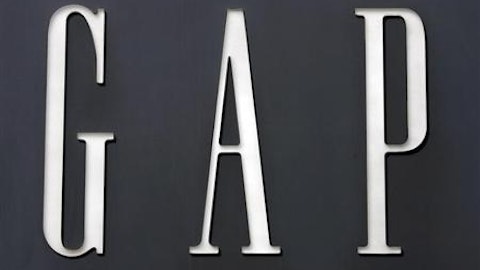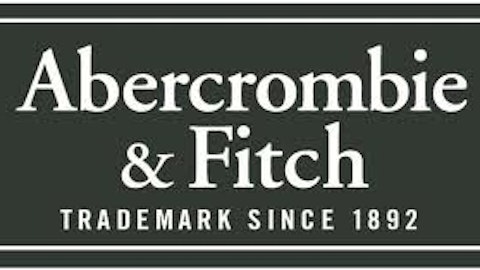Abercrombie & Fitch Co. (NYSE:ANF) is a specialty retailer that offers a wide range of casual apparel for men, women and kids. In this article we will explore what factors will prop up the company’s growth in the future and keep investors interested in the stock. With the U.S. economy exhibiting signs of improvement, consumer discretionary spending is expected to grow; therefore, going forward, retail stocks are expected to become lucrative investments.

I believe direct to consumer business will remain a key driver for apparel retailers for years to come, however, retailers will also benefit from better customer engagement through store productivity and international expansion.
During fiscal 2012, Abercrombie & Fitch Co. (NYSE:ANF) generated the highest percentage of its revenue through Hollister Stores, at around 43%, followed by Abercrombie & Fitch Co. (NYSE:ANF) stores, at around 32%. The remaining revenue was generated through the online channel and kids stores at around 15% and 9%, respectively.
Investors seeking to include an apparel retailer in their portfolio should definitely consider Abercrombie & Fitch Co. (NYSE:ANF), as the company has extreme growth potential through its direct to consumer segment and international expansion.
Growth trajectory
Abercrombie & Fitch Co. (NYSE:ANF) possesses a strong presence across Europe. It should be noted that the specialty retailer derives 25% of its revenue through international markets, of which a large portion is contributed through the European markets.
During fiscal 2012 and the first quarter of 2013, the international like for like sales dipped 8% and 16% respectively primarily due to a weak macroeconomic environment across the European region. The decline in revenue was also partly due to over expansion in few tourist spots, which resulted in sales cannibalization in spite of a reasonably limited store count across Europe. The company recently announced, to counter the drop in sales, it will now follow a passive expansion plan and only target underpenetrated or unexplored markets in order to offset the impact of cannibalization.
Other than Europe, Abercrombie & Fitch Co. (NYSE:ANF) is targeting markets such as UAE, Japan and Australia to launch its Hollister stores.
AT Kearney recently published a report, where it indicated that UAE’s per capita expenditure on clothing is one of the highest among all the developing markets across the globe. However, the apparel retail market in UAE is relatively smaller at around $6 billion approximately; nonetheless, it has exhibited a rapid growth rate during the last few years.
In stark contrast, the Japanese retail market stands at around $110 billion, but the growth exhibited relative to UAE’s apparel market is pale. It is worth noting that the Japanese market is experiencing a growing change in trends, where consumers are more inclined towards casual, economical clothing than expensive branded products. The cool biz campaign initiated by the government in order to reduce the air conditioning is further instigating consumers towards buying casual clothing. Such favorable trends in the Japanese market are expected to prop up its overall revenues.
Direct to Consumer will stimulate future growth
During the past three years, Abercrombie & Fitch’s direct to consumer segment has experienced a 35% year over year growth. Even though, direct to consumer business contributes only 15% to the overall revenues, the Trefis valuation estimates that direct to consumer segment holds approximately 40% value in Abercrombie & Fitch’s stock price.
The revenue share of this division is expected to grow exponentially in the coming years based on industry growth and the company’s initiative in making its online business a potent tool.
It is interesting to note that the U.S. represents approximately 34% of total global e-commerce sales, of which online shopping contributes 11%, which excludes groceries. Apparel and other related goods hold a massive 20% share in the total U.S. online retail sales. The outlook on the apparel sales through the online channel is highly optimistic, as eMarketer estimates the total online apparel market to grow from $45 billion during 2012 to $90 billion over the next four years.




